The camino Mozárabe joins the camino de la Plata on the next leg of my journey to Santiago de Compostela. The two caminos meet at the city of Merida. Before I reach that camino crossroad, the city of Cordoba stands. Unlike my experience in Granada, the vibrations of the city were not as unnerving. I actually looked forward to being there and planned a two-day stay. One day would be for taking a break, getting out of the sun, and resting my feet. The next day I wanted to visit the Mosque-Cathedral or Mezquita, an important Moorish architectural structure in Spain. I had to get there first.
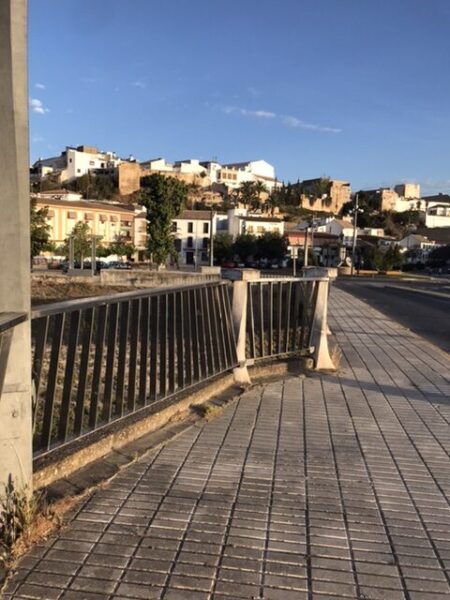
Refuge in the city
Cordoba quietly emerges out of the landscape. It has a big, small city vibe and was bustling. I made my way around and found my hotel (no albergue this time) on one of the quiet narrow streets.
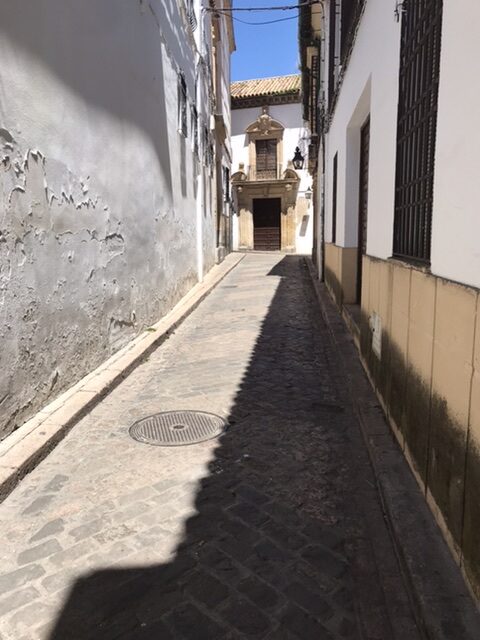
After cleaning myself up, I walked out of my street to the mercado nearby for salad fixings. Next was a stop at a pharmacy to refill my first aid kit. My feet? They are healing.
I had a nice salad of fruits and vegetables. What did have to drink?… a límon Fanta, of course. Then I got a restful night’s sleep.
Day 2 in Cordoba
Another hot day was forecasted for the city. The Mezquita was just 20 minutes away from the hotel, so I walked.

The Mezquita is famous for its over 800 original Moorish red and white arches. These are topped by a second Roman arch that gives off a sense of airiness.
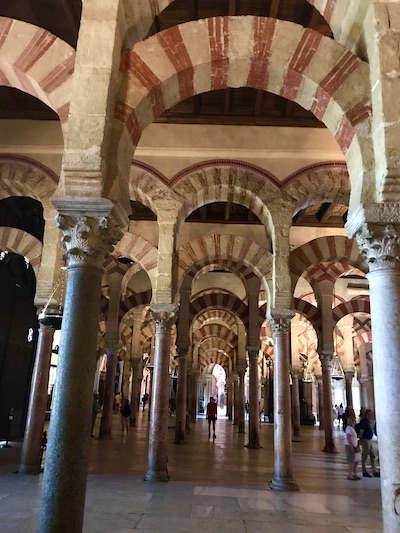
Another part of the great hall
There were many design modifications due to changes in rulers and resources. Thankfully, the arches were preserved.

Mezquita is Spanish (from Arabic) for mosque. The structure is referred to as the Mosque-Cathedral of Córdoba.
The new Spanish rulers built the Cathedral over the Mosque when the Spanish reclaimed the country in the 15th century. The only religious activities inside the Mezquita today are those of the Catholic church.
The rafters are decorated in traditional Islamic style meaning no human or animal images are used.

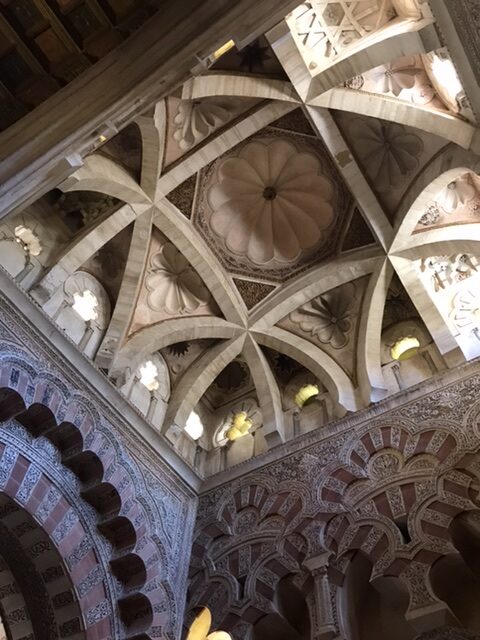
Another look at the rafters over the prayer hall.
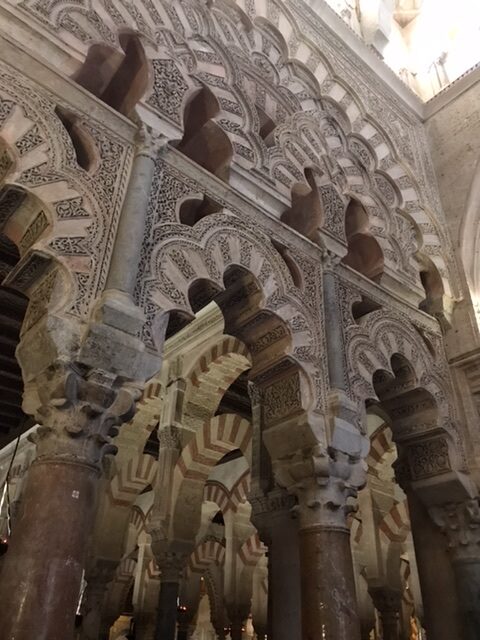
The thousand year old prayer hall.
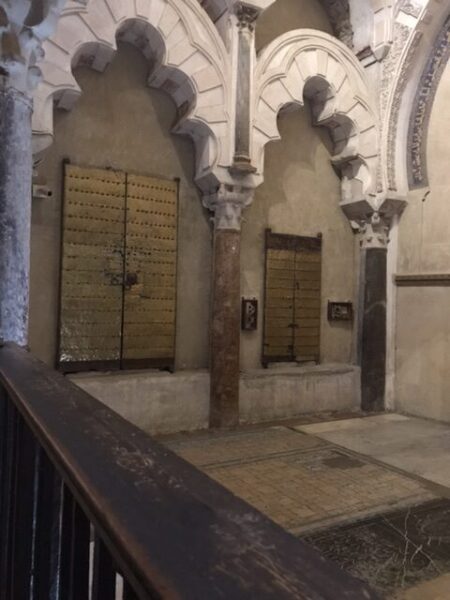

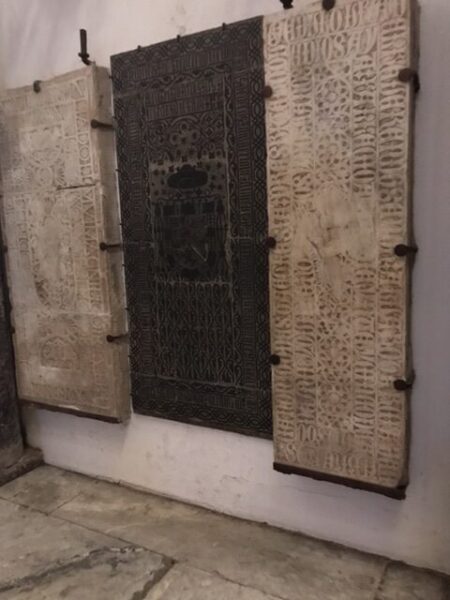
The mihrab in the great Mosque points toward Mecca.

A look at the Mihrab (video):
The cathedral within the Mezquita
The church or cathedral was erected in the center of the mosque. It is designed in the Renaissance and Baroque style and consecrated as a Roman Catholic cathedral.
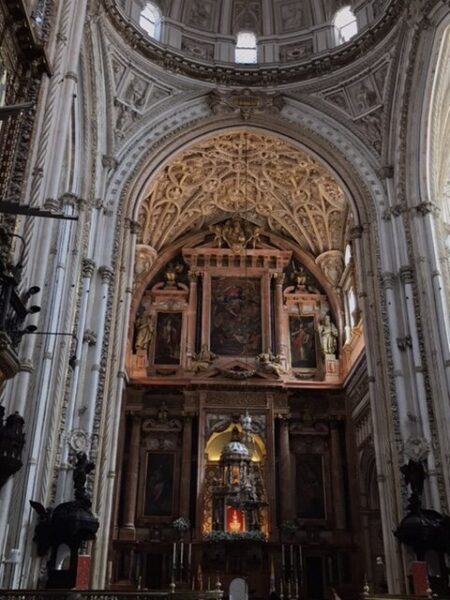
Once entered, the Cathedral looks like a church.

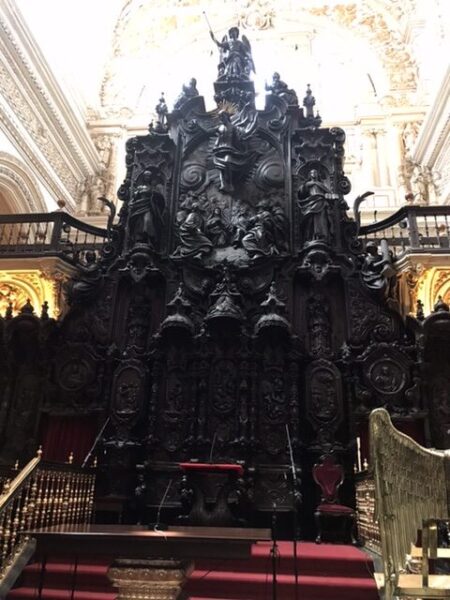
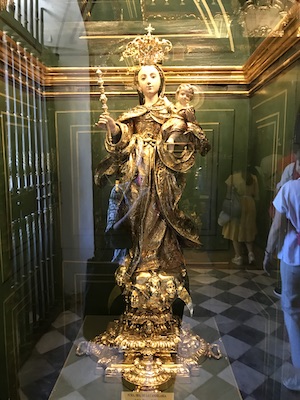
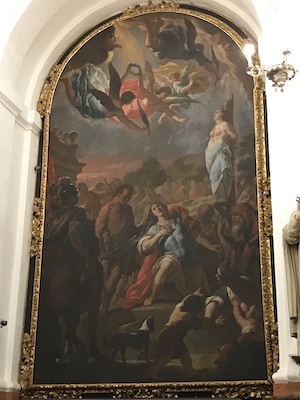
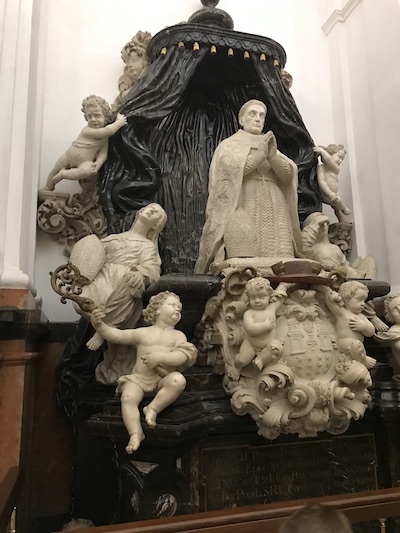
Catholic treasures are displayed in the church and off the great hall in a separate room.
A short pan of the church (video):
Outside the Great Hall
Outside the Mezquita buildings is the courtyard complete with a fountain. The bell tower encases the ancient minaret.
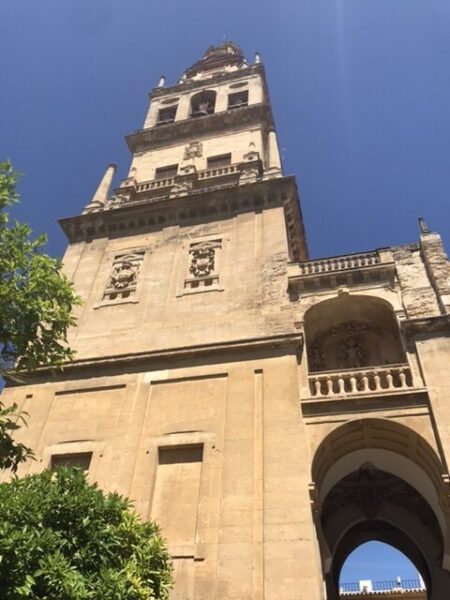


It is easy to see that the Mezquita is one of my favorite stops on the camino. I am impressed by the relationship between the mosque and cathedral. The structures represent how cultures – Muslim and Catholic – collide. A cathedral built within a mosque… it is unimaginable given the state of the world today.

I’ve noted this all over Spain. For me it is invigorating. During 800 years of Moorish rule in Spain, battles were fought to claim and reclaim lands and dominion. In addition to the deaths of many people on both sides for the purpose of cementing that dominion over a “territory”, structures that represented power and influence were destroyed.
This place is full of history. It may have served as the site of a Roman temple and then as a church for the Visigoths who temporarily seized Cordoba. After the Visigoths were driven out, it was converted into a mosque and continually renovated by a succession of Moorish rulers.
It happens all over
Certain structures such as castles, fortresses, and palaces were preserved or modified by the victor. Perhaps it was due to admiration of architectural innovations, financial constraints, or symbolism. This happens not only in Spain but all over the world. It is a strange and fascinating story that provides hints and suggests that mankind’s records of the world are not unquestionable.
If I could stay another day I would. However, I am a pilgrim on the road to Santiago de Compostela. There will be more fascinating places for me to see as I walk along the trail.
Now, it is time to leave.

Baadaye and Buen camino
Shirley J ❤️
This and several posts this summer will chronicle my pilgrimage in Spain where I will walk the 1400 kilometer-long camino Mozárabe. Read my announcement here.


2 thoughts on “👣 Noire Pilgrim: Cordoba”
Beautiful pictures, I love them.
Gracias!
Comments are closed.